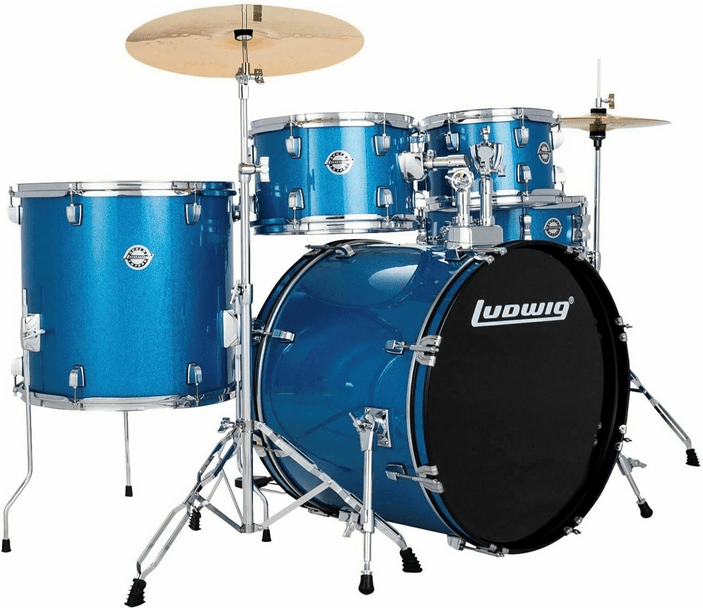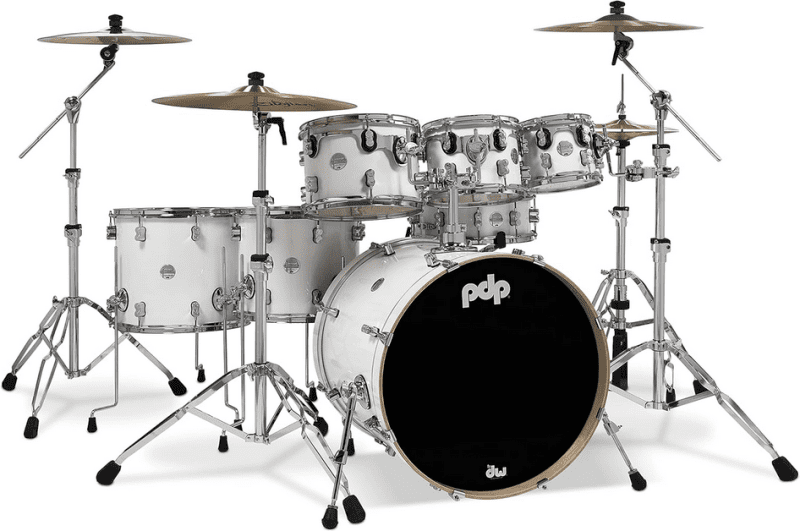Setting up a drum kit can be tough, even for beginners. A well-set drum kit is key for comfortable and efficient drumming. In this article, I'll show you how to set up your drum kit for a better playing experience.
A well-set drum kit helps you play better and keeps you safe from injuries. We'll talk about the right spot for the drum throne, bass drum, snare drum, toms, and cymbals. By the end, you'll know how to set up your drum kit for comfort and efficiency.

Key Takeaways
- Understand the importance of a properly set up drum kit
- Learn how to position your drum throne for comfort
- Discover the optimal placement for your bass drum, snare drum, toms, and cymbals
- Get tips for ergonomic drumming
- Enhance your overall drumming experience
The Importance of a Properly Set Up Drum Kit
https://www.youtube.com/watch?v=XPGm3V7whkA
Setting up your drum kit right is key for drummers looking to boost their skills. A well-put-together kit not only makes playing more enjoyable but also helps you perform better.
How Your Setup Affects Your Playing
Your drum kit's setup is crucial for your drumming. It impacts your speed, technique, and sound.
Impact on Speed and Technique
A well-set kit lets you move smoothly between drums and cymbals. This boosts your speed and technique. An ergonomic setup also keeps your body comfortable while playing.
Effect on Sound Production
The way you set up your kit also shapes the sound you make. Correct placement of drums and cymbals can improve sound quality. This makes your drumming more pleasing to the ear.
Common Setup Mistakes to Avoid
When setting up, there are common errors to steer clear of. These include wrong throne height, misplaced toms, and bad cymbal placement.
| Common Mistakes | Impact | Correction |
|---|---|---|
| Incorrect Throne Height | Discomfort and strain on legs | Adjust throne to allow for 90-degree knee bend |
| Misplaced Toms | Difficulty reaching toms, affecting technique | Position toms within easy reach, angled for comfort |
| Poorly Positioned Cymbals | Strain on arms and shoulders | Place cymbals at a comfortable height and angle |
Starting with the Foundation: Your Drum Throne

Your drum throne is more than just a seat. It's the base from which you control your entire drum kit. A comfortable throne setup is key for optimal drumming performance and technique.
Finding the Right Height for Your Throne
Adjusting your throne to the correct height is vital. Your legs should be at a 90-degree angle with your feet flat on the floor or on the bass drum pedal. This position helps maintain a comfortable posture and reduces strain on your legs.
Positioning Your Throne for Maximum Comfort
Position your throne so that you can sit comfortably with your back straight and your drums within easy reach. Experiment with different positions to find what works best for you.
Throne Types and Their Benefits
There are various types of drum thrones available, each with its benefits. The main types include round and motorcycle seats, with or without backrests.
Round vs. Motorcycle Seats
Round seats are traditional and provide a wide range of motion. Motorcycle seats offer more support and are preferred by some drummers for their comfort during long performances.
Backrest Options
Some thrones come with backrests, which can provide additional support and comfort. But they may restrict movement for some drummers.
| Throne Type | Benefits |
|---|---|
| Round Seat | Wide range of motion, traditional design |
| Motorcycle Seat | More support, comfortable for long performances |
| Backrest Option | Additional support, can enhance comfort |
How to Set Up Your Drum Kit for Comfort and Efficiency: The Bass Drum and Pedal
Setting up your bass drum and pedal is key for comfort and efficiency in drumming. A well-adjusted setup can greatly improve your drumming experience.
Positioning Your Bass Drum
The right spot for your bass drum is important for comfort and sound. Make sure it's at a height that lets your leg form a 90-degree angle with the pedal. This helps you play comfortably.
Adjusting Your Bass Drum Pedal
Adjusting your bass drum pedal involves a few important steps. You need to look at the spring tension, beater height, and angle.
Spring Tension Settings
Spring tension controls how the pedal goes back to its starting position. Adjusting the spring tension to a good level helps for smooth, controlled playing.
Beater Height and Angle
The height and angle of the beater are key for your bass drum's sound. Try different settings to find the sound you want.
Double Bass Pedal Considerations
Double bass pedal users need to think about syncing the pedals and adjusting tension. Proper synchronization boosts your performance and comfort.
By fine-tuning your bass drum and pedal, you can get a more efficient and comfy drumming setup.
Snare Drum Placement and Adjustment

A well-adjusted snare drum is key to a comfortable drumming setup. Its position impacts your playing technique and comfort during long sessions.
Finding the Optimal Snare Height
Finding the right snare height is crucial. Sit on your drum throne and place your sticks on the snare. Your elbows should be slightly bent, and your arms relaxed.
Adjust the snare drum's height so you can strike it easily. This avoids strain on your wrists and shoulders.
Angling Your Snare for Comfort
Correctly angling your snare drum improves comfort. It should be tilted for easy access. Start by tilting it slightly towards you.
This ensures your sticks strike it squarely without straining your wrists.
Snare Drum Distance from Your Body
The snare drum's distance from your body matters too. It should be close enough for easy striking but not too close. Aim for 2-4 inches away from your body.
This distance helps you maintain a relaxed posture while playing. Adjusting the snare drum's height, angle, and distance makes drumming more comfortable and efficient. It also prevents fatigue and injury.
Arranging Your Toms and Cymbals
The way you set up your toms and cymbals greatly affects your drumming. A good layout can make playing easier and sound better.
Rack Tom Positioning
Rack toms are key in most drum kits. Think about the mounting system and how to adjust height and angle.
Mounting Systems and Options
There are many ways to mount rack toms, like clamp-on and independent mounts. Pick one that's stable and flexible.
Height and Angle Adjustments
Adjust the rack toms' height and angle for comfort. This reduces arm strain and improves your technique.
Floor Tom Placement
Floor toms should be easy to reach and play. They're usually on either side of the bass drum, slightly angled.
Hi-Hat Positioning and Adjustment
The hi-hat's spot should be comfy for your feet and sticks. Adjust its height and angle to fit your style.
Crash and Ride Cymbal Placement
Crash and ride cymbals need to be easy to get to and not strain your arms. Think about their height and angle.
Height Considerations
Make sure crash and ride cymbals are at a height that's comfy for you. This helps avoid getting tired during long plays.
Angle for Optimal Sound and Stick Response
The angle of your cymbals affects their sound and how they respond to sticks. Try different angles to find what works best for you.
| Cymbal Type | Height Adjustment | Angle Adjustment |
|---|---|---|
| Crash | High for dramatic effect | Angled for clear strike |
| Ride | Lower for sustained sound | Flat for consistent response |
Ergonomic Considerations for Long-Term Drumming Health
As a drummer, setting up your kit with ergonomics in mind is crucial for long-term health and performance. A well-organized drum kit not only enhances your playing experience but also reduces the risk of discomfort and injury.
Minimizing Strain on Your Wrists and Shoulders
To minimize strain, it's essential to position your drums and cymbals in a way that allows you to play with relaxed posture. Keep your snare drum at a comfortable height, and ensure your cymbals are within easy reach. This setup helps in reducing the strain on your wrists and shoulders, allowing you to play for longer periods without fatigue.
Preventing Back Pain with Proper Setup
Back pain is a common issue among drummers, often resulting from a poorly set up drum kit. To prevent this, adjust your drum throne to a height that allows you to sit with your back straight and your legs at a comfortable angle. This posture helps distribute your weight evenly, reducing the strain on your back.
Adjusting Your Kit as You Grow and Develop
As you grow and develop as a drummer, your needs may change. Regularly assess your drum kit setup to ensure it remains ergonomic and comfortable. Make adjustments as necessary to accommodate your changing technique and physical demands.
By prioritizing ergonomics in your drum kit setup, you can enjoy a healthier and more enjoyable drumming experience. "The key to long-term drumming health is a setup that combines comfort, efficiency, and playability."
Conclusion: Fine-Tuning Your Setup Over Time
As you grow as a drummer, fine-tuning your drum kit is key. A well-optimized setup is vital for comfort and performance. It makes playing easier and more enjoyable.
To get the best drum kit setup, keep making adjustments. This means drum kit tuning and tweaks for comfort and efficiency. This way, you can focus on your music without setup issues.
Regularly check and refine your setup to find areas for improvement. You might need to adjust the throne height, tom positions, or drum kit optimization. By improving your setup, you'll play with more confidence and precision.
Follow the tips in this article and keep fine-tuning. You'll soon have a drumming experience that's both fun and rewarding.
DISCLAIMER
This document is provided for general information purposes only and should not be relied upon as providing legal advice, technical, or specific operational guidance to the reader, whether as to the practices described in the document or the applicable legal requirements and regulations. Percussion Pros expressly disclaims any responsibility for liability arising from or related to the use or misuse of any information in this document.




